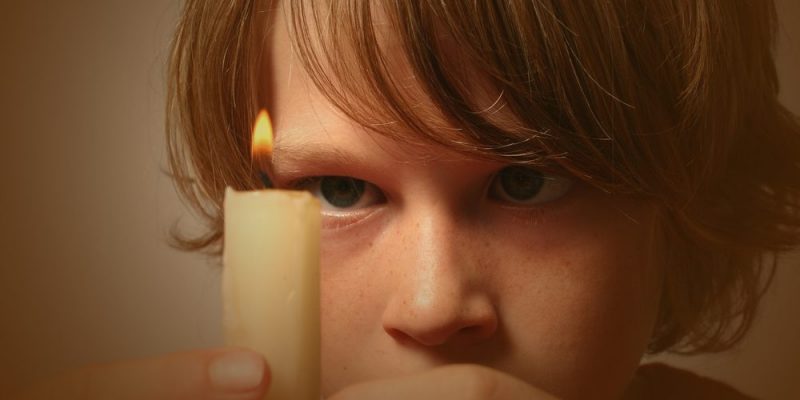We explain what obsession is and what its relationship is with compulsion. Also, obsession in children and the scales of obsessions.

What is obsession?
Obsession is understood in various contexts with different meanings, but they all have the same basis, a subject or repetitive idea. Despite the negative view you may have, an obsession can be much more frequent than you can imagine and it is not always a psychological disorder or problem that must be treated, unless it causes problems in some area of life.
The word obsession has its origin in Latin obsessionwhich means “siege”. And it basically consists of a disturbance of the mood generated by a consistent, rigid and persistent idea that affects the mind and has various forms of manifestation.
The obsession becomes annoying because mismatches with the subject's conscious thought and getting rid of it is an arduous task, since it perseveres beyond the will of the person.
See also: Phobia
Obsession and compulsion

Obsession has a pathological connotation because dominates the spirit of those who suffer from it being a force that completely controls him, producing both anxiety and anguish.
Now, an obsession is almost the same as compulsion, since both are a combination of ideas or thoughts that end up sowing exhausting emotions in the subjects, such as fear or fear. And although obsession is related to ideas and compulsion to behavior, the former can also be conceived as behavior.
However, we will understand compulsion as, expressly, systematic behaviors that are carried out in the form of a ceremony in order to appease obsessions. Therefore, a compulsion cannot exist if there is no obsession.
Obsession in a psychotic context
For those who suffer from obsession and for those who do not know the subject It may seem like behavior that borders on madness probably for this reason patients are afraid to consult a specialist, because of the answer they may get or because of what others say.
But obsession does not always respond to a psychotic condition; it is often part of the symptomatology of various types of disorders such as anxiety or depression.
The most severe cases, such as delirium or hallucinations, do not accompany common people with obsessions. Brief reactive psychoses are more frequently observed in obsessive-compulsive neurosis, caused by a deterioration due to its presence, or a severe intensity of the obsession that ends up generating psychotic symptoms.
Obsession in children

Piaget is one of the authors of the most emblematic development and provides an important observation regarding the behaviors that a child can perform as a ritual.
It basically consists of the fact that learning in certain evolutionary stages of the human being includes repetitive and somewhat obsessive acts this is because habits begin to be established.
It is precisely in the period called «latency» when signs of obsessive personality types begin to be obtained. So carrying out a detailed evaluation is essential to make an accurate discrimination between what is “normal” and what is “abnormal.”
Obsession scales
These can be present in different degrees and modalities. Recurring thoughts, impulses or images that:
- They are experienced as symptoms of a disorder, appearing intrusively and causing anxiety.
- They are related only to specific events or daily concerns.
- They try to ignore or appease with other ideas or behaviors.
- They are able to recognize the nature of their obsession and do not give it greater importance.
Looks towards Obsessive-Compulsive Disorder
There are various authors who provide an explanatory model, but we will point out some of the most important or current ones, as the case may be:
- Eysenck He maintained that obsessions arise from the incubation response, which comes as a consequence of frustration at not receiving a reward in the face of unconditioned stimuli that cause fear. Therefore, when something does not calm the fear, it can become a recurring and persistent theme or, interest can be lost. But the obsession corresponds to the first. Compulsion would be the mechanism by which the person seeks to calm down and have the illusion of keeping those disturbing ideas under control.
- Horowitz He maintains that it is common for people to have certain obsessive ideas without them reaching the point of being pathological. These are simply thoughts that many individuals share in silence.
- Rachman and Silva They add to what Horowitz points out that these intrusive ideas correspond to everyday harmful ideas, to which the subject has not been able to get used to or adapt, which is why it persists.
Treatments for Obsessive-Compulsive Disorder

- Behavioral They seek exposure to the stimulus that triggers the obsession in order to achieve, in a therapeutic and subsequently adaptive context, habituation to said element.
- Organic In “ancient times” this type of treatment consisted of surgery or lobotomy. Currently, certain types of drugs are used, depending on the diagnosis, such as tricyclics (Imipramine or monoamine oxidase inhibitors), which have worked very well, especially when depression has been present. Otherwise, tranquilizers are usually a complement to psychotherapy in situations of overwhelming anxiety.
- Cognitive. It uses various techniques such as covert awareness in order to treat harmful or destructive habits.





